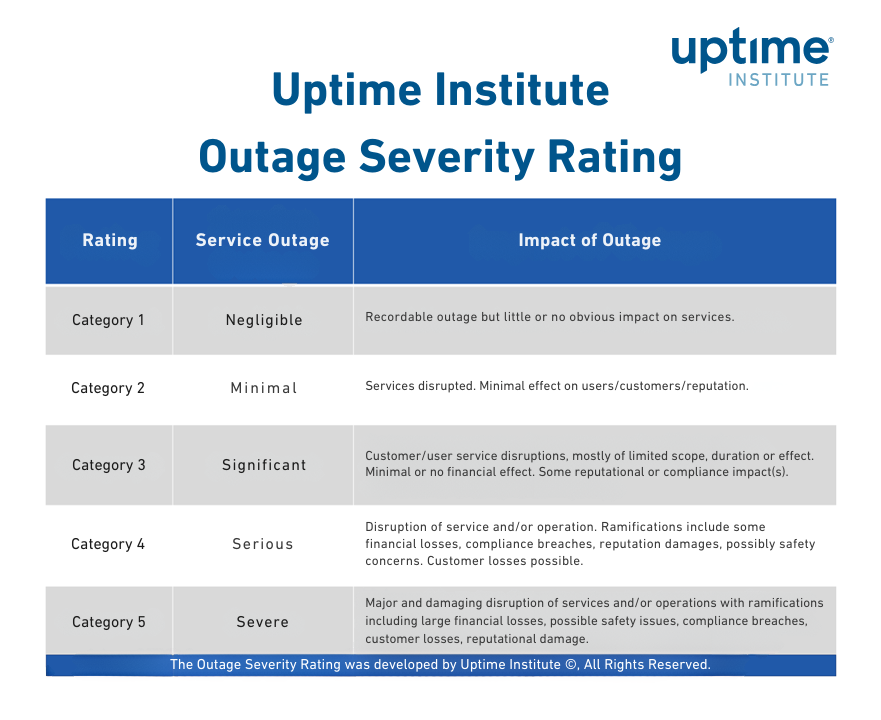Uptime Institute Outage Severity Rating
The Outage Severity Rating (OSR) was developed by Uptime Institute to help the digital infrastructure industry better distinguish between a service outage that threatens the business and an interruption that has little or no impact.
Uptime Institute's Intelligence group studies publicly reported outages to understand what causes unplanned downtime and the effects of service interruptions. The number of outages reported by the media has climbed steadily year on year, from 27 in our first year of reporting (2016) to 163 in 2019.
Uptime Institute’s OSR will help the digital infrastructure and data center community better understand and articulate service outages in the context of how each incident affects the business.
The OSR provides infrastructure practitioners a common lexicon to use in forming their own service delivery capacity strategies and describing their own outages in terms of business impacts, rather than referencing outages based upon the number of physical infrastructure components involved.
Questions about the Outage Severity Rating?
A metric to classify the severity and impact of outages
Although there are various ways to categorize the mission criticality of various systems as a planning tool for disaster recovery and availability/redundancy investments, there is no Beaufort scale for measuring the severity/impact of outages.
Such a rating is clearly useful. For example, the effect of losing access to a human resources system for two weeks might be frustrating but negligible, even in large organizations, while a 5-minute loss of a currency trading system could be near catastrophic to the business.
For classifying the impact of publicly reported outages, Uptime Institute has created a five-level Outage Severity Rating as outlined below.


